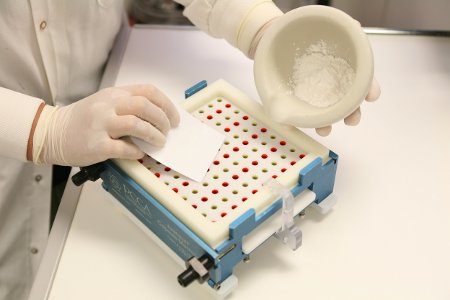In the realm of antimicrobial therapy, pharmaceutical Methylene Blue emerges as a captivating and promising player. Beyond its vibrant blue hue, this versatile compound has been gaining attention for its potential in combating infections and various medical functions. As we delve into the mechanism behind Methylene Blue's antimicrobial prowess, we uncover a fascinating world of scientific discoveries and prospects.
Unveiling the Basics: What is Pharmaceutical Methylene Blue?
Before exploring its antimicrobial properties, let's familiarize ourselves with Methylene Blue. Originally identified for its use as a dye in textiles and staining biological samples, this compound has discovered its method into the realm of medication. Look at this website is now an integral part in numerous pharmaceutical preparations, exhibiting efficacy in various medical eventualities.
An Antimicrobial Powerhouse: The Mechanism of Action
Methylene Blue's exceptional antimicrobial potency lies in its unique mechanism of action. When introduced right into a biological system, it exhibits broad-spectrum activity against a variety of pathogens, including bacteria, fungi, and even some viruses. Understanding how this compound works offers valuable insights into its therapeutic potential.
1. Disruption of Pathogen's Cellular Respiration: Methylene Blue's first line of attack is directed at the pathogen's cellular respiration course of. By interfering with the electron transport chain within the microorganism's mitochondria, it disrupts their vitality production, in the end resulting in the collapse of important cellular capabilities.
2. Reactive Oxygen Species Generation: Within the pathogen, Methylene Blue catalyzes the production of reactive oxygen species (ROS). These extremely reactive molecules induce oxidative stress, causing harm to the pathogen's DNA, proteins, and lipids, rendering it unable to proliferate successfully.
3. Inhibition of Biofilm Formation: Methylene Blue displays the flexibility to inhibit biofilm formation—a protecting barrier that pathogens build to evade the immune system and antimicrobial agents. By disrupting biofilms, Methylene Blue enhances the vulnerability of those pathogens to different therapeutic interventions.
4. Potential Synergy with Antibiotics: In some cases, Methylene Blue has demonstrated a synergistic impact when mixed with conventional antibiotics. This combination enhances the antibiotic's effectiveness, potentially decreasing the development of antibiotic resistance in pathogens.
Applications in Antimicrobial Therapy
The multi-faceted mechanism of Methylene Blue opens doorways to varied applications in antimicrobial therapy and past.
1. Treating Infectious Diseases: From bacterial infections like methicillin-resistant Staphylococcus aureus (MRSA) to fungal infections, Methylene Blue shows promise as an adjunct therapy in the remedy of difficult and drug-resistant infections.
2. Antiviral Potential: While its antiviral properties are nonetheless under investigation, Methylene Blue has displayed inhibitory effects in opposition to sure viruses, making it a subject of curiosity in antiviral analysis.
3. Combatting Biofilm-Associated Infections: Biofilms contribute to chronic and recurrent infections, complicating therapy efforts. Methylene Blue's capability to disrupt biofilms might supply a new strategy to combating such infections.
four. Neurodegenerative Disorders: Beyond its antimicrobial properties, Methylene Blue is being studied for its potential in neurodegenerative issues, similar to Alzheimer's disease and Parkinson's illness, due to its neuroprotective results.
Considerations and Future Prospects

While pharmaceutical Methylene Blue holds large potential, additional analysis is necessary to unlock its full therapeutic capabilities. Safety profiles, optimum dosages, and potential interactions with other medicines warrant cautious evaluation.
The mechanism of pharmaceutical Methylene Blue in antimicrobial therapy is an interesting journey into the world of medicinal breakthroughs. As researchers continue to unravel its intricacies, this vibrant blue compound might show to be a valuable ally within the struggle against infectious diseases and other medical challenges. With each scientific revelation, the promise of Methylene Blue as a game-changing antimicrobial agent shines brighter, providing hope for a healthier future..
